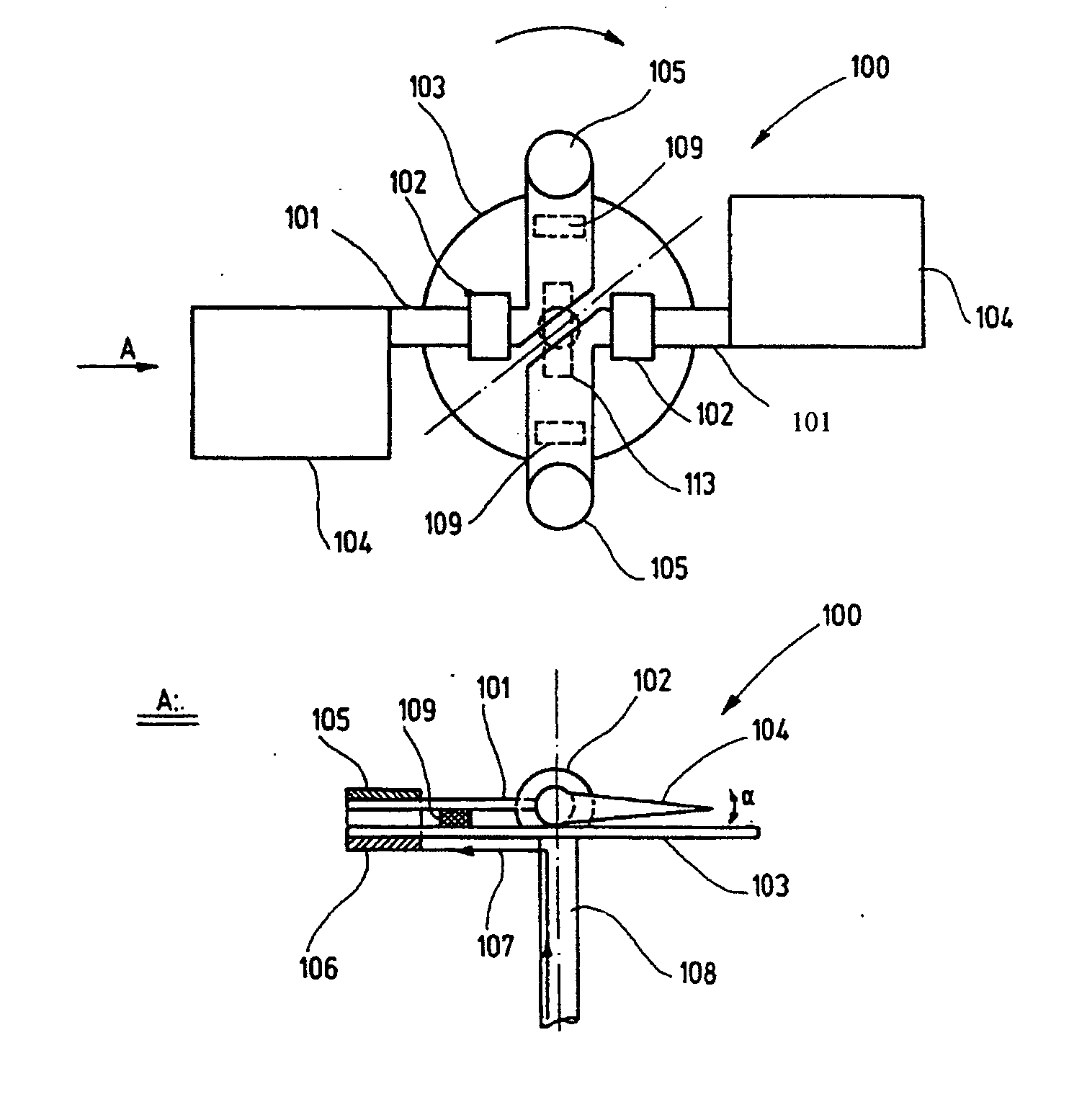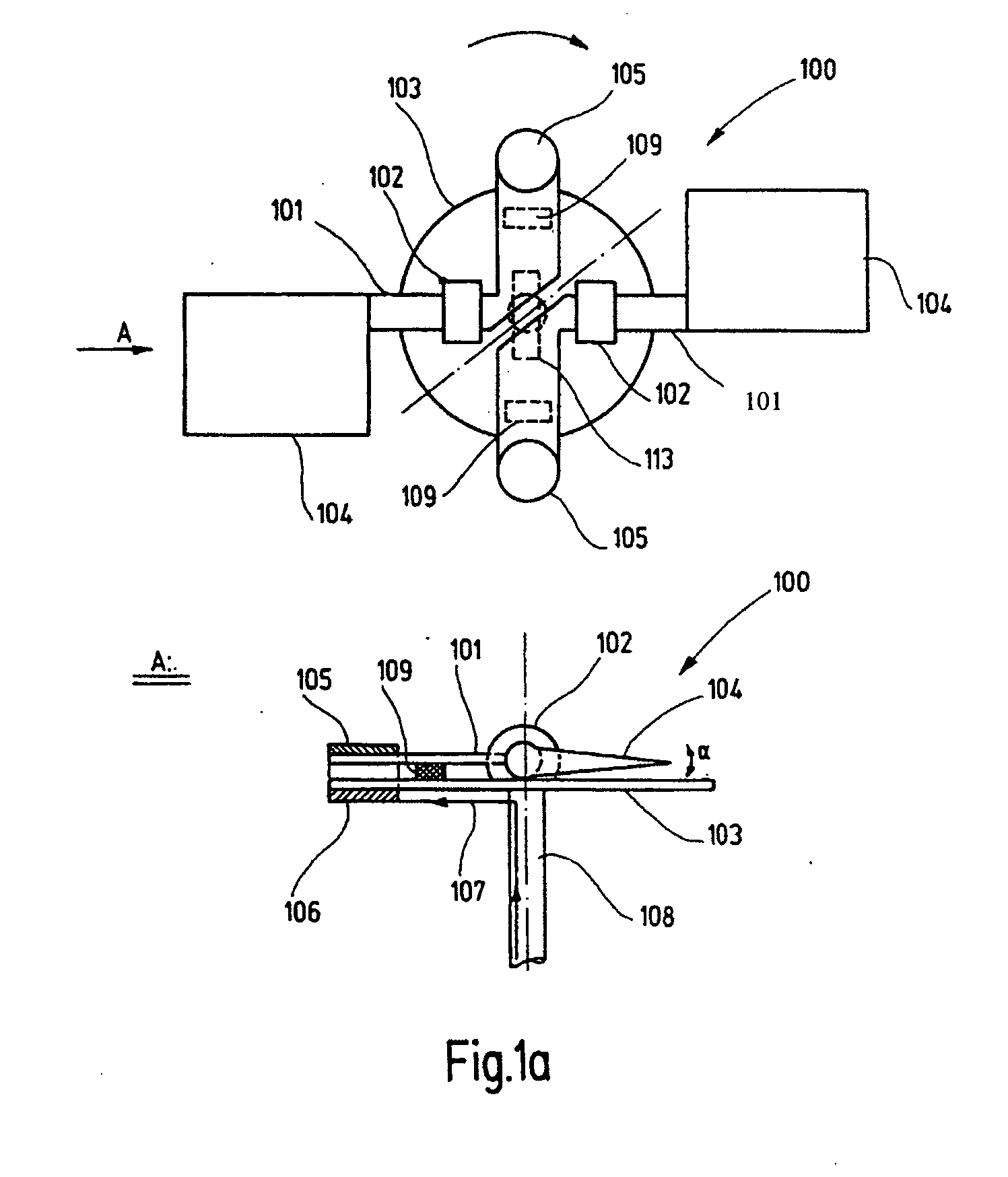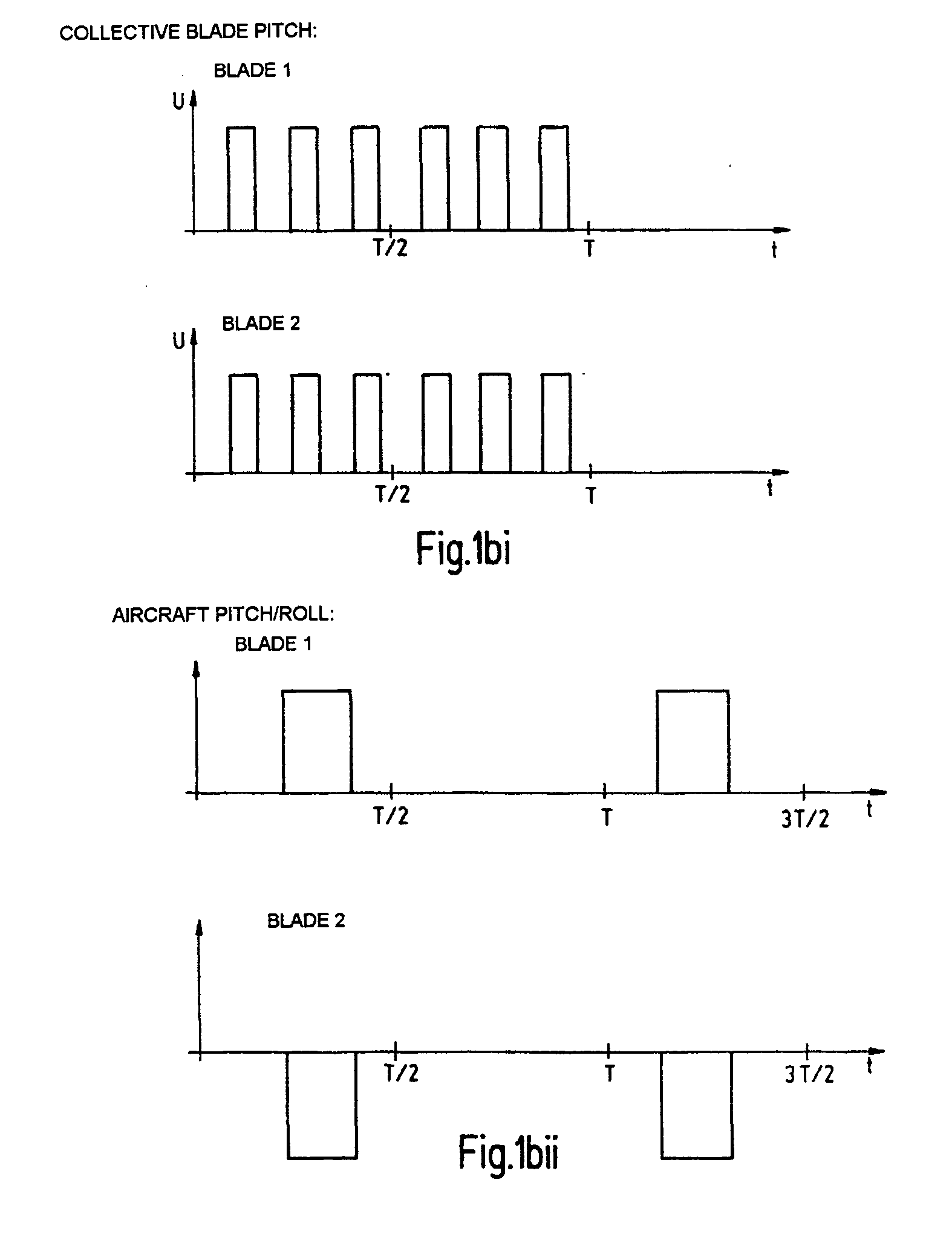Rotor system for a remotely controlled aircraft
a remote control and helicopter technology, applied in the direction of propellers, propulsive elements, water-acting propulsive elements, etc., can solve the problems of heavy motors, heavy weight of second internal combustion engines, and no model helicopters with a weight of 200 grams have been commercially available, so as to increase bearing friction, increase bearing friction, and strengthen the damage of damping elements
- Summary
- Abstract
- Description
- Claims
- Application Information
AI Technical Summary
Benefits of technology
Problems solved by technology
Method used
Image
Examples
first embodiment
[0040] FIG. 1a shows a plan view and side view of a main rotor of the aircraft according to the invention. Two coils 106, which are electrically connected via tap contacts (which are not illustrated), are mounted symmetrically with respect to the main rotor shaft 108 on a main rotor plate 103, which is connected to a main rotor shaft 108 which runs in bearings. Two rotary bearings 102 are likewise mounted on the main rotor plate 103 and each have a connecting bracket 101 mounted in them, to whose opposite ends a permanent magnet 105 and a rotor blade 104 are attached. The permanent magnet 105 is arranged such that a direct current 107 through the coils 106 leads to deflection of the connecting bracket 101 and hence to a change in the angle of incidence a of the rotor blades. The change in the angle of incidence a also results in a change in the speed of the air which is accelerated downward or upward by the rotor blades 104 as the rotor head rotates, and hence also results in a chan...
second embodiment
[0042] FIG. 1c shows a plan view and a side view of a main rotor of the aircraft according to the invention. In order to avoid sliding contacts, which in some circumstances are susceptible to defects, for producing an electrical connection to the coils 106, the coils 106 are mounted in the non-rotating part of the helicopter in the embodiment illustrated in FIG. 1c. The connection between the rotor blades 104 and the permanent magnets 105 is in this case provided via connecting brackets 101, eyes 110 and push rods 111, on which the permanent magnets 105 are mounted. The vertical force which is introduced into the connecting bracket 101 through the push rod 105 via the eye 110 leads to the already described deflection of the connecting bracket 101 and to the described control response, that is to say to the adjustment of the angle of incidence a. In the embodiment illustrated in FIG. 1c, the resetting of the rotor blades 104 is ensured by providing weights 112 instead of the weight o...
third embodiment
[0044] FIG. 1e shows a plan view and side view of a main rotor of the aircraft according to the invention. The embodiment illustrated in FIG. 1e is a variant of the main rotor control which can be implemented more easily, but which nevertheless has aircraft pitch / roll control capabilities. According to the illustration in FIG. 1e, a coil 106, which is electrically connected via tap contacts (which are not illustrated), is mounted on the main rotor plate 103, which is connected to the main rotor shaft 108. Two rotary bearings 102 are likewise mounted on the main rotor plate 103, in which one, and only one, connecting bracket 101 is mounted, which rigidly connects the two rotor blades 104 to one another and to whose transverse cantilever ends a permanent magnet 105 and a counterweight 114 are fit. The permanent magnet 105 is arranged such that a direct current 107 through the coil 106 leads to deflection of the connecting bracket 101 and hence to a change in the angle of incidence a o...
PUM
 Login to View More
Login to View More Abstract
Description
Claims
Application Information
 Login to View More
Login to View More - R&D
- Intellectual Property
- Life Sciences
- Materials
- Tech Scout
- Unparalleled Data Quality
- Higher Quality Content
- 60% Fewer Hallucinations
Browse by: Latest US Patents, China's latest patents, Technical Efficacy Thesaurus, Application Domain, Technology Topic, Popular Technical Reports.
© 2025 PatSnap. All rights reserved.Legal|Privacy policy|Modern Slavery Act Transparency Statement|Sitemap|About US| Contact US: help@patsnap.com



